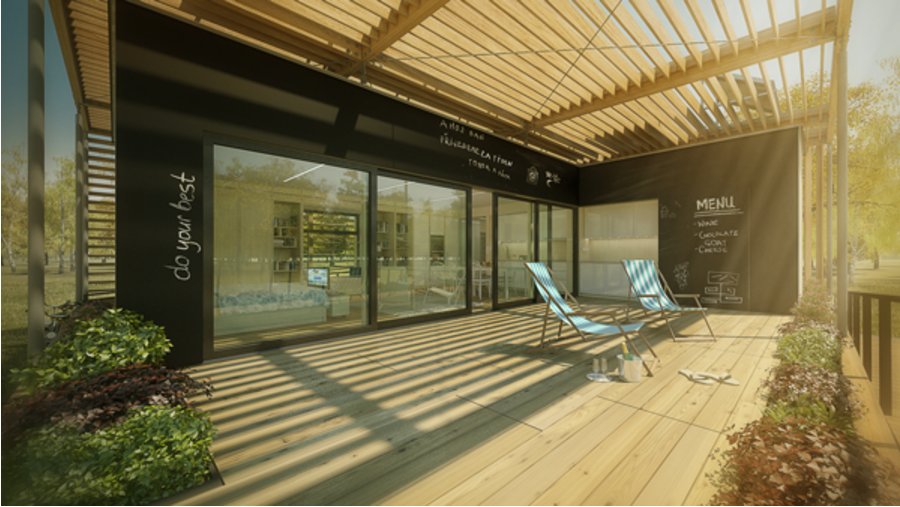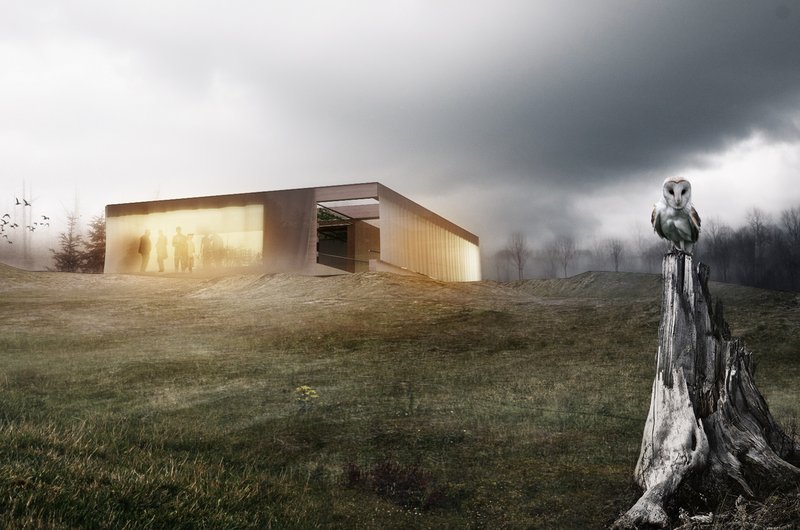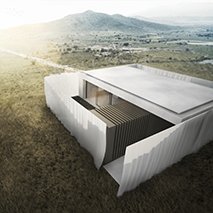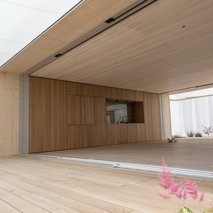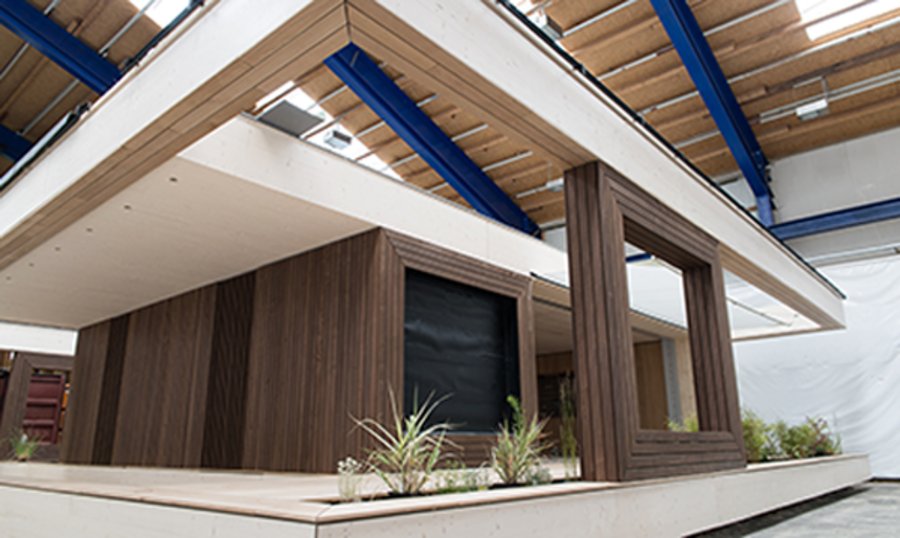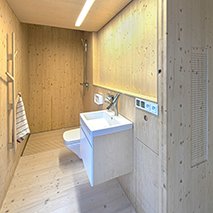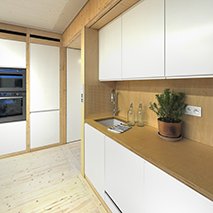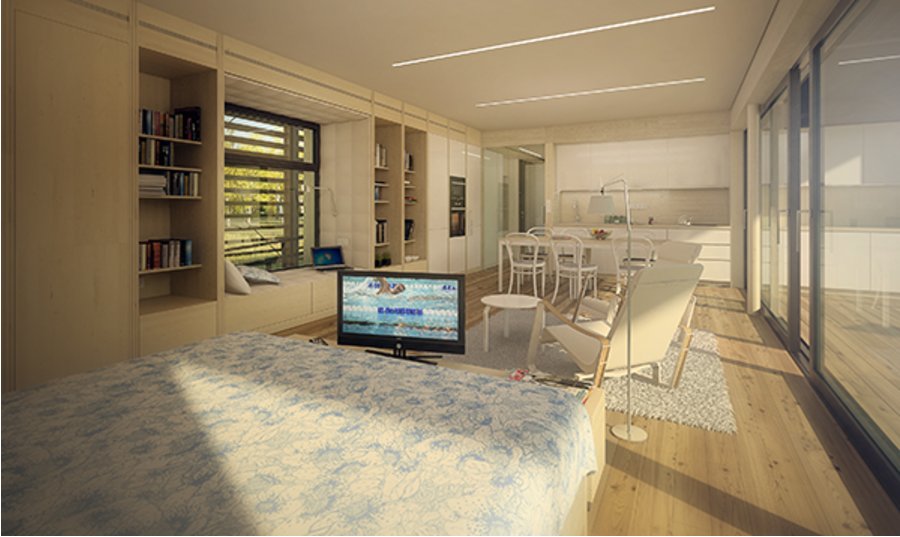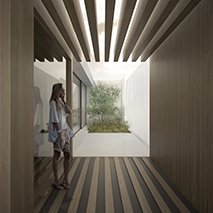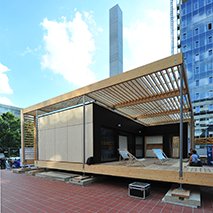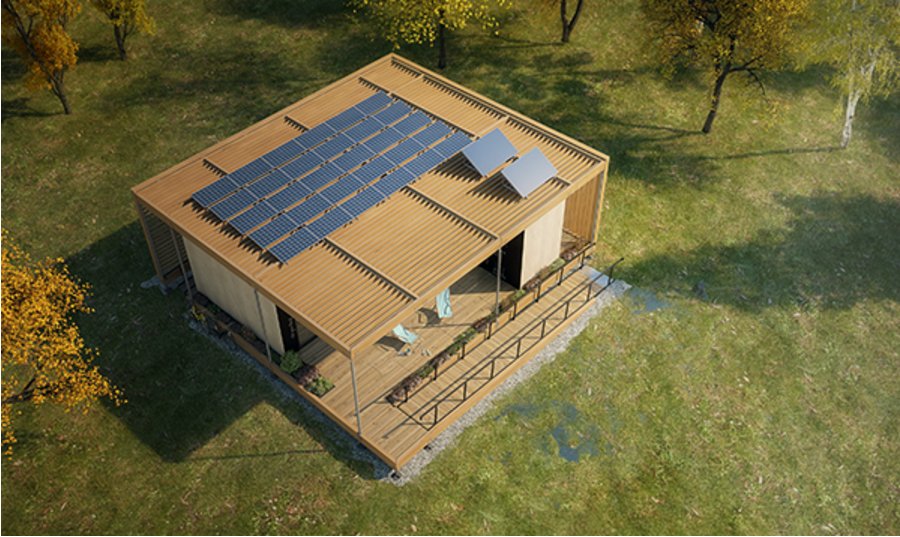LISI was Team Austria’s so-called energy-plus house that is completely energy self-sufficient. The synergy of the modular timber construction and the use of renewable materials and energies creates a high-quality and sustainable house for different users and sites. The building’s textile outer façade shell is equipped with active solar elements and adapts with flexibility to the needs of its occupants. By means of audio-visual scenarios, an interactive user manual explains how to optimise the house’s power usage under variable conditions. The bathroom of the LISI house features the Vero washbasin and toilet by Duravit, both of which are characterised by their timeless, straight-lined design.
The Czech team drew on national traditions: the CTU Prague’s design presented an ecological house for senior citizens and is inspired by the custom of small Czech holiday homes, so-called “chatas”. The AIR House was designed as a home for one to two people aged 50 and over. Based on floor area, the accessible, solar-powered house is the smallest entry in the Solar Decathlon. The compact, eco-friendly architecture reduces the total cost of ownership throughout the building’s lifecycle. Furthermore, the AIR House offers comfort in a compact living space: in the bathroom, the combination of rimless wall-mounted WC from the DuraStyle range and the SensoWash shower-toilet seat, both by Duravit, ensure comfort and efficient flushing technology. The bidet feature is revealed when the toilet is open: a stainless steel spray arm offers three different types of shower. In the AIR House kitchen, the Vero under counter sink keeps the work area clean: liquids and food waste are simply wiped straight from the work surface into the bowl.
The prototypes were constructed in the university town of Irvine, California and opened to the general public for ten days for assessment of their suitability for everyday use. The buildings had to meet their entire energy requirement with solar energy they have generated themselves. As in the Olympic decathlon, the jury evaluated ten categories. So it was important to combine factors such as architectural design and living quality with optimum energy efficiency and affordability. The winning house was the contribution of Team Austria. The entry from Prague reached third place.
Further information:
www.solardecathlon.gov
www.duravit.com
